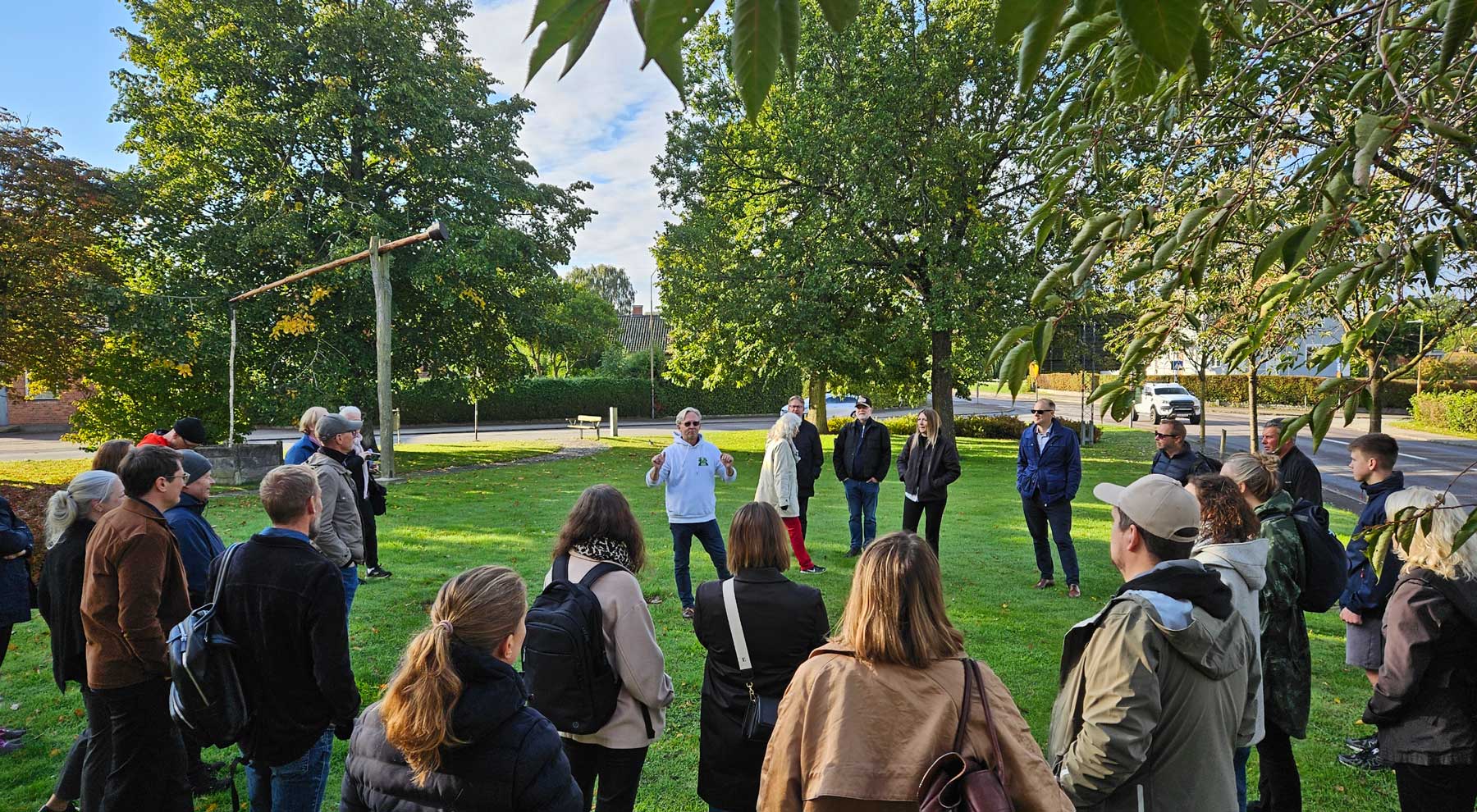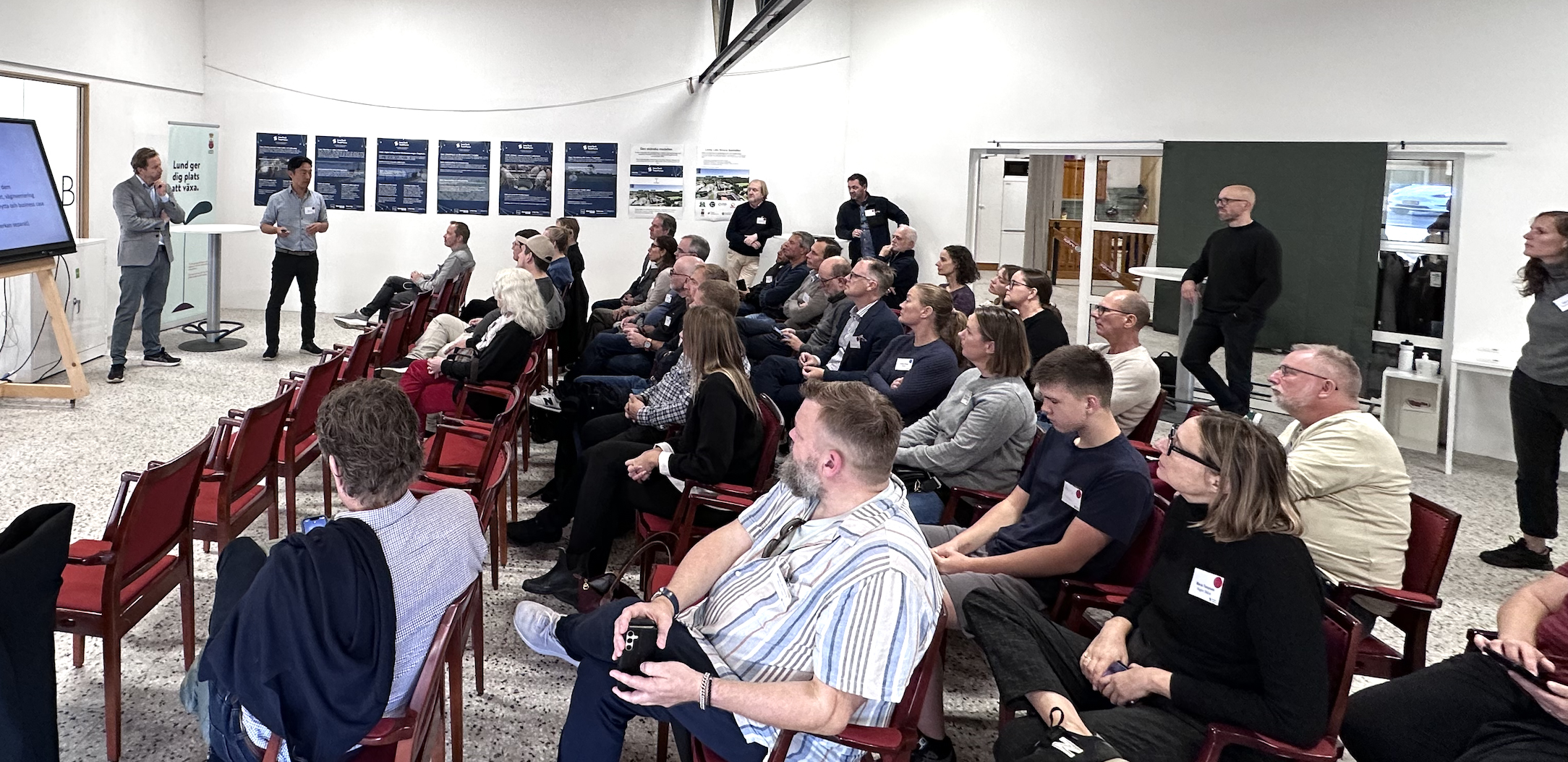Regional collaboration lifts IoT effort

More than 40 people from the municipalities of Kristianstad, Angelholm, Tomelilla, Malmo, Helsingborg, Staffanstorp and Lund together with Innovation Skåne, Region Skåne, Smart Villages, technology companies, Kraftringen and Future by Lund gathered in Veberöd for a kickoff for a new regional collaboration in IoT and digital solutions.
The starting point was the InnoTech Task Force project where, for example, the municipalities of Tomelilla and Ängeholm collaborated for three years with a large number of Danish municipalities to investigate how digital technology and data can be used to make a green transition. The project has focused on five thematic areas (Smart buildings, Climate/Water, Urban development in 3D, City status and Mobility in urban and rural areas) and within these we have run 25 use cases to show the way.
In the course of the project, it has been shown that Denmark is more prominent in how municipalities jointly test technologies and share knowledge of technology solutions by having a comprehensive unit.
- We would like to start something similar to what Denmark has but in a way that suits Skåne, says Martin Güll, Innotech Task Force. It is important to collaborate in the region and to find how we can develop and copy solutions to be able to make an impact. We need to gather the skills, clarify what solutions exist and be a development engine that creates volume.

At the Kick-off, a proposal was presented for how the work can continue.
- We propose that the Scanian development engine should consist of two parts, continues Johan Rosendahl at Innovation Skåne. It should be a collaboration group for municipalities, which can be a powerhouse where municipalities can share resources and can help each other copy and implement solutions. The focus would be on disseminating and scaling working IoT solutions with clear business cases with obvious benefits for administrations, municipal corporations and citizens.
The second part is a Living lab test bed that can be described as a transparent place and method for developing and testing new smart connected solutions, which could be at Smart Villages in Veberöd.
- Through this, we get concrete collaborations that help everyone get on the journey of using IoT, even those small municipalities that may have less resources, says Anna Gillquist, Digitization Strategist in Regional Development at Region Skåne. We all need to work with sensors and new technologies to meet climate challenges and create better sustainability. Technology can also help our policymakers make the right decisions to reduce our climate impact.
Tomelilla and Ängelholm are the two municipalities in Scania that participated in the InnoTech Task Force.
“In the project, I found it particularly rewarding to see how Denmark works with IoT and data to meet climate challenges,” says Sofie Pragler at Ängelholm Municipality. "Denmark has come further than us and we need to learn from them. There, for example, they have a collaboration between municipalities with the opportunity to see both what challenges you have and what solutions exist so that not everyone has to find their own solution. We haven't done that in Sweden before, but now we've got our eyes on it."
"Tomelilla is a small municipality and we do not always have the resources to fix everything ourselves", says Mikael Göransson, Tomelilla Municipality. "Often we can be quick and decisive but don't always have the resources to buy all the stuff. This is why collaboration is important to us, because through this we can team up with more people, make sure that the technology is tested and get useful examples. When we can see the usefulness of things, it's easier to keep going."

The day began with a tour to look at the solutions that Smart Villages are doing in Veberöd. For a few years, Smart Villages through Jan Malmgren has been testing different ways to create utility with sensors. The uniqueness of the work in Veberöd is that it is possible to set up a new test quickly and that the villagers' wishes are taken into account through contact in various digital channels. So when the villagers think that it is fast driving on roads or parking lots, Smart Villages find ways to demonstrate this, and when Smart Villages test new technologies with cameras and AI, the villagers get to like it.
- Here in the village we have been testing real solutions together with the residents for almost a decade, says Jan Malmgren. We have an interesting dialogue and by listening to what the villagers think, and we can also see what are their fears and how we can respond to them. So we don't just test the technology, we also see what fits in everyday life with feedback from people.
Texts about some projects in Veberöd
New idea from Smart Villages puts the sensor in place
Veberöd a testing ground for digital building permit management
Connected Veberöd inspiration in Danish-Swedish project
Upscaling of what was tested in Veberöd. New measurement of noise and emissions at Mårtenstorget
Sensors for advanced traffic analysis to be tested in Veberöd
New way to connect sensors is being tested in Veberöd
Thumbs up for new customer survey


